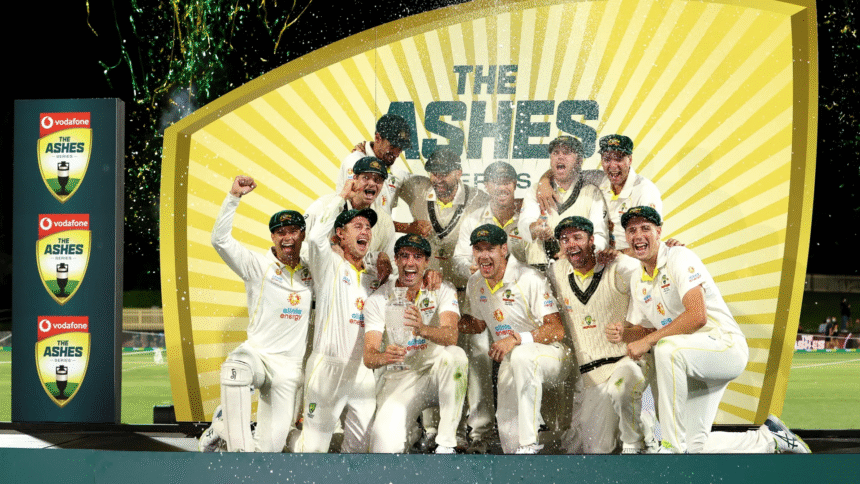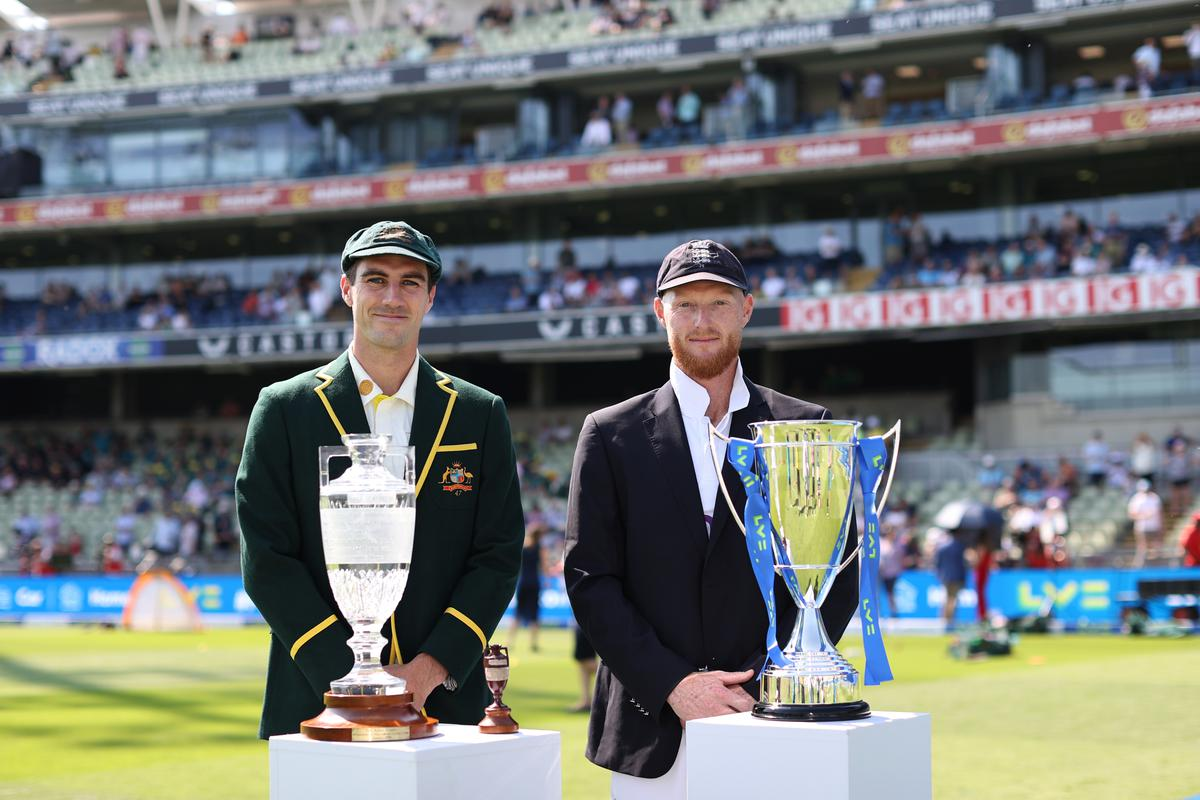Few sporting rivalries evoke as much passion, history, and drama as The Ashes—the legendary Test cricket series between England and Australia. For over 140 years, this contest has defined the pinnacle of Test cricket, blending fierce competition with deep-rooted tradition. Even in the modern era of T20 leagues and fast-paced cricket, The Ashes remains the ultimate test of skill, endurance, and national pride.
But what makes this rivalry so enduring? Why does a contest born in the 19th century still captivate fans worldwide? This article explores the history, iconic moments, and cultural significance of the Ashes Test series, explaining why it continues to rule Test cricket.
The Birth of The Ashes: A Rivalry Forged in Defeat
The Ashes Test series legend began in 1882, when Australia stunned England at The Oval, securing their first-ever Test victory on English soil. A satirical obituary in The Sporting Times declared that English cricket had died, and “the body will be cremated and the ashes taken to Australia.”
This humorous yet poignant remark gave birth to The Ashes mythos. When England toured Australia in 1882-83, captain Ivo Bligh vowed to “bring back the ashes.” After winning the series, he was presented with a small urn—believed to contain the ashes of a burnt cricket bail—symbolizing the rivalry’s spirit.
Today, the original urn resides at Lord’s Cricket Ground, but the battle for Ashes supremacy continues every two years, alternating between England and Australia.
Why The Ashes Still Captivates Cricket Fans
Unmatched Historical Significance
Unlike other cricket series, The Ashes is steeped in lore. From Don Bradman’s Invincibles to Botham’s Ashes (1981) and the 2005 epic, the series has produced legendary performances that define cricketing greatness.
The 1932-33 Bodyline series, where England used controversial tactics to counter Bradman, remains one of cricket’s most contentious chapters. Such moments have cemented The Ashes as more than just a game—it’s a cultural institution.
The Ultimate Test of Skill and Stamina
Test cricket is the purest form of the game, demanding technique, patience, and mental toughness. The Ashes Test series, played over five grueling matches, pushes players to their absolute limits.
- Fast bowling duels (Lillee vs. Botham, McGrath vs. Flintoff)
- Batting masterclasses (Bradman’s 99.94 average, Cook’s 766 runs in 2010-11)
- Spin wizardry (Warne’s “Ball of the Century” to Gatting, 1993)
These battles exemplify why The Ashes is the pinnacle of Test cricket.
National Pride and Passion
For England and Australia, The Ashes is more than cricket—it’s about bragging rights. The rivalry transcends sport, influencing national identity.
- Australian fans taunt England with “Pom” banter
- English crowds belt out “Jerusalem” before play
- Media hype reaches fever pitch, with newspapers dubbing it “war without weapons”
This intensity ensures every series feels monumental.
Iconic Moments That Define Eras
Few contests produce as many unforgettable moments:
- 1981: Botham’s Ashes – Ian Botham’s heroic all-round performances turned the series around.
- 2005: Flintoff & Pietersen’s Heroics – A nail-biting 2-1 England win, widely regarded as the greatest Test series ever.
- 2019: Stokes’ Miracle at Headingley – Ben Stokes’ unbeaten 135 snatched victory from the jaws of defeat.
These moments ensure The Ashes legacy lives on.
The Ashes in the Modern Era: Adapting Yet Unchanged
Even as cricket evolves with T20s and franchise leagues, the Ashes Test series retains its traditional soul. However, it has also adapted:
- Day-Night Tests (introduced in 2017) add a new tactical layer.
- Broadcast technology (Hawk-Eye, UltraEdge) enhances viewer engagement.
- Social media buzz amplifies fan interactions, making it a global spectacle.
Yet, the core essence remains: five-day battles, swinging Dukes/Kookaburra balls, and unrelenting pressure.
The Unforgettable Fan Culture: From Barmy Army to Aussie Chants
The Ashes Test series isn’t just famous for the cricket—it’s known for its electric atmosphere. The Barmy Army transforms Australian grounds into singalongs, while Aussie fans fire back with boisterous chants and unmatched enthusiasm.
Whether it’s the Boxing Day Test at the MCG or a nail-biting finale at The Oval, the crowd’s energy fuels the players. It’s no exaggeration to say that fan culture is the heartbeat of the Ashes Test series.
The Future of The Ashes: Will It Remain Cricket’s Crown Jewel?
With Test cricket’s popularity declining in some regions, questions arise about The Ashes’ future. However, several factors ensure its survival:
- ICC’s Support for Test Cricket – The World Test Championship (WTC) gives context to bilateral series.
- Player Commitment – Stars like Pat Cummins and Joe Root prioritize The Ashes over franchise leagues.
- Fan Loyalty – Record attendances in 2023 (Edgbaston, Lord’s) prove demand remains high.
As long as cricket values history and rivalry, The Ashes will reign supreme.
Captains Who Changed the Ashes Test Series
Great leadership often defines an Ashes Test series. Captains like Steve Waugh, Ricky Ponting, and Michael Vaughan have added strategic brilliance and inspiration to their squads.
- Waugh’s aggression in the 2000s marked a golden Australian era
- Vaughan’s leadership in 2005 helped reclaim the urn after 18 years
- Today, Pat Cummins and Ben Stokes represent two distinct philosophies—analytical vs. audacious
The Ashes Test series is as much a mental battle between skippers as it is between bat and ball.
Read More: Yashasvi Jaiswal Test Career: India’s Next Red-Ball Superstar?
Conclusion
Ashes Test series, For 140 years, The Ashes has embodied the spirit of Test cricket. Its history, drama, and national pride make it unrivaled in the sporting world. Whether it’s Bradman’s dominance, Warne’s magic, or Stokes’ heroics, this rivalry continues to produce legendary moments.
As cricket evolves, The Ashes stands firm—a testament to tradition, competition, and the enduring love for Test cricket.
For more on The Ashes’ history, visit ESPN Cricinfo’s Ashes Archive—an authoritative source on cricket’s greatest rivalry.









